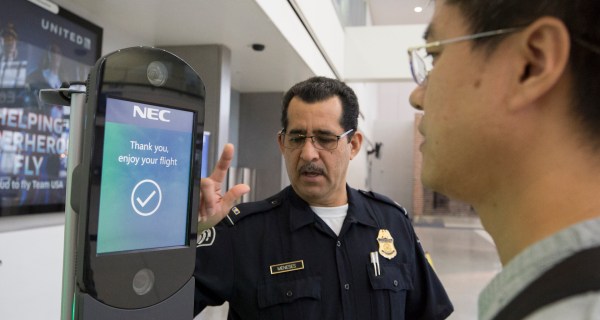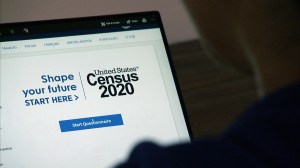
The federal government is always trying to do more with less. And few federal agencies need to do more than the Census Bureau, which once a decade collects information on every person living in the country.
Recently, the government has been able to save time and reduce costs by using mobile devices and data. So it’s not surprising that the Census Bureau plans to make a historic change to the way data will be collected, stored and shared for Census 2020. Field workers and respondents will now have the option to trade in their pens and paper — instead recording information using mobile devices and online applications.
To evaluate the performance of mobile data collection, the Census Bureau launched tests in the greater Houston and Los Angeles metropolitan areas in late March.

Office operations at the Census Bureau Area Office Support Center in Glendale, California, March 2016. Source: Census.gov
The use of advanced technology to document information was originally under consideration for the 2010 Census, but traditional recording methods were still used due to logistical complications during the testing process. Similarly, the Census Bureau will analyze the results and execution of mobile data collection from these 2016 census tests to determine whether it will be the new standard.
The census is a critical component to reporting statistical and demographic information for our country, making it imperative that all sensitive data be collected accurately and stored safely.
What Does the Mobile Transition Mean?
The first enumeration took place in 1790 and every decade since then, the Census Bureau has relied heavily on using hard copies to document and save data. However, this antiquated method has become tedious and expensive, and the Census Bureau has taken note.
For the 2016 census tests, field workers have the ability to use mobile devices to record data, while respondents can share their information online, over the phone and, in rare cases, through paper questionnaires.
Often times, the census is viewed as a key measurement of domestic growth. One of the greatest ways to show progression and advancement through this process is to change the way invaluable census data is recorded. As a result of technology used in the census, including geospatial information systems, there will be a reduced need for door-to-door census taking.
The task of optimizing mobile application performance will be a significant undertaking, which is why the 2016 census tests serve as the gateway to a full digital transition for 2020. Using technology and optimized networks will reduce the ramifications of congestion, latency and loss of information.
Mobile data collection and the shift to online methods for collecting data is projected to maximize efficiency, while potentially saving the federal government millions of dollars. As the Census Bureau works toward these goals, it may face challenges as a result of collecting data through mobile platforms.
The Right Way for Mobile Data Collection
The transition to using mobile technology will be a huge feat for the Census Bureau. To ensure high levels of accuracy and precision in the way data is tracked and stored, wide-area network, or WAN, verification is an absolute must.
Taking a glance at the 2016 census trials, 225,000 households in each testing location are participating. Incorporating WAN verification and optimization into the tests allows for mobile application to perform at a high level, while also enabling activity to occur in multiple places simultaneously. Optimization delivers the critical ability to pinpoint the clearest path from the data center using a wireless signal within a network, which makes it one of the most efficient processes for mobile data collection.
The Census Bureau chose to launch the tests in the Houston and Los Angeles metropolitan areas for a number of reasons, but noted the varying levels of internet usage as a key determining factor. Securing the census network is crucial, as field workers that are using mobile technology to collect data must have a combination of online and offline capabilities.
Security will be a key issue, as a recent survey found that 89 percent of federal IT leaders worry about data security at remote office locations and the Census 2020 will involve hundreds upon hundreds of those locations to collect the vast amount of data needed.
Foreshadowing Census 2020
If the 2016 census tests are successful, the use of mobile technology and online networks will be the new mode of collecting and saving census data moving forward. It is a critical time for the Census Bureau, which must prove these new technologies can withstand the onslaught of data it will face during Census 2020.
Census 2020 could mark a turning point for data collection by the federal government, if done properly.
For example, optimized networks would lead to a census questionnaire being completed in the field and data being sent 20 times faster than non-optimized networks — that is the equivalent of flying from New York to Los Angeles compared to driving. Essentially, that is what Census is trying to accomplish by removing the need to stop at every home in the country.
As the private sector increases its reliance on mobile data and technology, it is only expected that the federal government will follow suit. The current Census 2020 tests are the latest reflection of this mobile transition and its results will have far-reaching implications.






